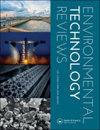Pesticide removal from drinking water sources by adsorption: a review
Q1 Environmental Science
引用次数: 65
Abstract
ABSTRACT Pesticides are an important part of crop production worldwide, however their use poses a threat to potable water sources. Seasonal use of pesticides can cause increased concentrations to be detected at potable water abstraction sites as a shock load which can be difficult for conventional treatment processes to deal with. Concentrations of pesticides above 0.1 µg/L in drinking water contravene the regulations as laid out in the Drinking Water Directive and cause significant reputational and financial impact to water companies. This review considers the relationships between the pesticides that have caused compliance failures and their physico-chemical properties, and factors such as weather and rainfall. It was found that over 50% of the pesticide compliance failures in England and Wales were caused by the molluscicide metaldehyde and that the majority of the problematic pesticides are considered to be polar and mobile. The review looks in further detail at five different pesticides with differing physico-chemical properties known to have caused compliance failures and to be of particular concern for water companies. In addition adsorption media which could be utilised in agricultural catchments were investigated to understand whether they could be applied to prevent the onward contamination of potable water sources. GRAPHICAL ABSTRACT饮水水源中农药的吸附去除研究进展
摘要农药是世界范围内作物生产的重要组成部分,但其使用对饮用水源构成了威胁。季节性使用杀虫剂会导致饮用水取水点的浓度增加,这是传统处理工艺难以处理的冲击负荷。农药浓度高于0.1 饮用水中的µg/L违反了《饮用水指令》中的规定,并对水务公司的声誉和财务造成重大影响。这篇综述考虑了导致合规失败的农药与其物理化学性质以及天气和降雨等因素之间的关系。研究发现,在英格兰和威尔士,超过50%的农药合规失败是由杀螺剂金属醛引起的,大多数有问题的农药被认为是极性的和可移动的。该审查进一步详细审查了五种不同的农药,它们具有不同的物理化学性质,已知导致了合规失败,并引起了水务公司的特别关注。此外,还调查了可用于农业集水区的吸附介质,以了解它们是否可用于防止饮用水源的进一步污染。图形摘要
本文章由计算机程序翻译,如有差异,请以英文原文为准。
求助全文
约1分钟内获得全文
求助全文
来源期刊

Environmental Technology Reviews
Environmental Science-Water Science and Technology
CiteScore
6.90
自引率
0.00%
发文量
8
 求助内容:
求助内容: 应助结果提醒方式:
应助结果提醒方式:


